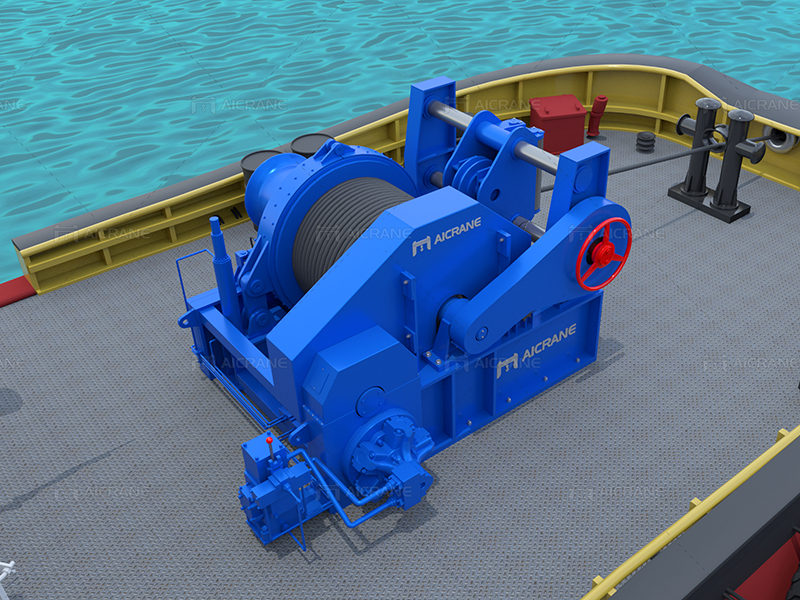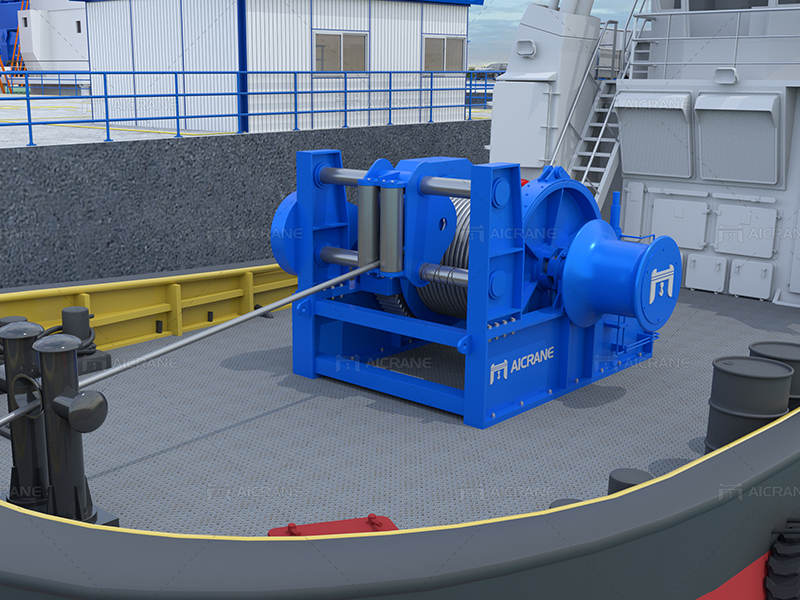In the ever-advancing landscape of maritime technology, marine towing winches have undergone significant transformations to meet the demands of efficiency, safety, and operational convenience. One noteworthy development in recent years is the integration of remote and automated operation capabilities into marine towing winch systems. This article explores the possibilities, challenges, and potential benefits associated with remotely and automatically operated marine towing winches.

Traditional Towing Winches:
Traditionally, towing winches have been operated manually, requiring the presence of skilled personnel on board to manage towing operations. This manual operation involved controlling the winch’s speed, tension, and direction, often demanding physical effort and precision from the operators. While effective, this approach had limitations in terms of response time, especially in emergency situations, and required continuous attention from the crew.
The Rise of Remote Operation:
Advancements in technology have ushered in a new era for marine towing winches, introducing remote operation capabilities. Remote-controlled towing winches leverage wireless communication systems, allowing operators to control the winch from a distance. This remote capability provides several advantages, including improved safety by enabling operators to manage towing operations from a safer vantage point on the vessel.
Benefits of Towing Winch Remote Operation:
a. Enhanced Safety: One of the primary benefits of remote operation is improved safety. Operators can control the towing winch from a location with better visibility and reduced exposure to potential hazards, enhancing overall safety during towing operations.
b. Quick Response to Emergencies: Remote operation allows for faster response times in emergency situations. Operators can swiftly adjust parameters or initiate emergency procedures without the need to physically approach the winch, reducing the risk of accidents and improving overall responsiveness.
c. Optimized Crew Allocation: With remote operation, the crew can be strategically positioned for various tasks, optimizing their roles and responsibilities. This can lead to increased efficiency in overall vessel operations.
d. Better Maneuverability: Remote-controlled towing winches offer improved maneuverability, allowing operators to make real-time adjustments to the towing process. This capability is particularly valuable in dynamic maritime environments and during complex towing scenarios.

Automated Towing Winches:
Taking remote operation a step further, automated electric towing winches represent the pinnacle of technological integration in maritime systems. Automated systems utilize sensors, algorithms, and advanced control mechanisms to manage towing operations without direct human intervention. This level of automation is designed to enhance precision, reduce human error, and optimize performance.
Advantages of Automated Operation:
a. Precision and Consistency: Automated towing winches provide unparalleled precision and consistency in towing operations. Algorithms and sensors work together to maintain optimal tension, speed, and direction, ensuring a stable and controlled towing process.
b. Reduced Human Error: Automation minimizes the potential for human error during towing operations. The reliance on sensors and pre-programmed algorithms reduces the risk of mistakes that could compromise safety or the efficiency of the towing process.
c. 24/7 Operation Capability: Automated systems can operate around the clock without fatigue, contributing to increased operational efficiency. This capability is particularly advantageous in scenarios where continuous towing operations are required.
d. Data Logging and Analysis: Automated towing winches often come equipped with data logging capabilities, allowing operators to analyze performance data over time. This data-driven approach facilitates proactive maintenance, optimization of towing processes, and compliance with industry standards.
Challenges and Considerations:
While the integration of remote and automated capabilities brings significant benefits, it also presents challenges that need careful consideration:
a. Cybersecurity Concerns: Remote and automated systems are susceptible to cybersecurity threats. Ensuring robust cybersecurity measures is paramount to prevent unauthorized access and potential disruptions to towing operations.
b. Training and Familiarization: Crew members need proper training to operate and understand remote or automated towing winches. Familiarization with the technology is crucial to ensure that operators can effectively utilize the system’s capabilities.
c. Integration with Existing Systems: Retrofitting existing vessels with remote or automated towing winches may pose challenges in terms of system integration. Compatibility with other onboard systems and seamless integration are essential considerations during the installation process.
d. Redundancy and Fail-Safe Mechanisms: To address potential system failures or malfunctions, redundant systems and fail-safe mechanisms must be in place. This ensures that, in the event of a technical issue, towing operations can be safely and manually taken over.
Future Prospects and Industry Trends:
The trend towards remote and automated towing winches aligns with broader developments in the maritime industry, where autonomy and digitalization are gaining momentum. The integration of artificial intelligence (AI) and machine learning (ML) technologies is expected to further enhance the capabilities of automated towing winches, enabling them to adapt to diverse towing scenarios with increased intelligence and autonomy.
Regulatory Frameworks:
As remote and automated technologies become more prevalent in the maritime sector, regulatory frameworks are evolving to ensure the safe and responsible implementation of these systems. International maritime organizations and regulatory bodies are actively developing guidelines and standards to govern the use of remote and automated technologies in towing operations.
Conclusion:
The integration of remote and automated capabilities into marine hydraulic towing winches represents a transformative shift in the maritime industry. While challenges exist, the benefits in terms of safety, efficiency, and operational flexibility are compelling. As technology continues to advance, and industry standards evolve, the adoption of remote and automated towing winches is likely to become more widespread, shaping the future of towing operations at sea. Embracing these innovations requires a collaborative effort from industry stakeholders, regulators, and technology providers to ensure the seamless integration and responsible use of these cutting-edge systems in the maritime landscape.